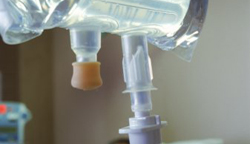OBJECTIVE—In a
recent randomized controlled trial, lowering blood
glucose levels to 80–110 mg/dl improved clinical
outcomes
in critically ill patients. In that study, the insulin
infusion protocol (IIP) used to normalize blood glucose levels
provided valuable
guidelines for adjusting insulin therapy. In our hands,
however, ongoing expert supervision was required to
effectively manage
the insulin infusions. This work describes our early
experience with a safe, effective, nurse-implemented
IIP that provides
detailed insulin dosing instructions and requires
minimal physician input.
RESEARCH
DESIGN AND METHODS—We collected data from 52 medical
intensive care unit (MICU) patients who were
placed on the IIP. Blood glucose levels were the
primary outcome measurement. Relevant clinical
variables and insulin
requirements were also recorded. MICU nurses were
surveyed regarding their experience with the IIP.
RESULTS—To
date, our IIP has been employed 69 times in 52 patients
admitted to an MICU. Using the IIP, the median
time to reach target blood glucose levels (100–139
mg/dl) was 9 h. Once blood glucose levels fell below
140 mg/dl, 52%
of 5,808 subsequent hourly blood glucose values fell
within our narrow target range; 66% within a
"clinically desirable"
range of 80–139 mg/dl; and 93% within a "clinically
acceptable" range of 80–199 mg/dl. Only 20 (0.3%) blood
glucose
values were <60 mg/dl, none of which resulted in
clinically significant adverse events. In general, the
IIP was readily
accepted by our MICU nursing staff, most of whom rated
the protocol as both clinically effective and easy to
use.
CONCLUSIONS—Our nurse-implemented IIP is safe and effective
in improving glycemic control in critically ill patients.
Click here for more >







